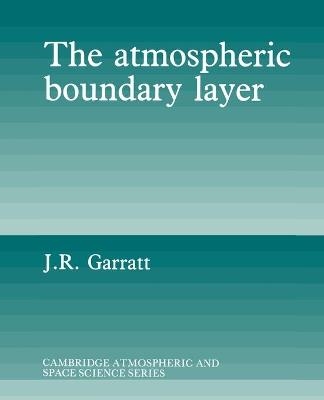
The Atmospheric Boundary Layer
Seiten
1994
Cambridge University Press (Verlag)
978-0-521-46745-2 (ISBN)
Cambridge University Press (Verlag)
978-0-521-46745-2 (ISBN)
This book is an advanced text covering both the physics and dynamics of the atmospheric boundary layer. It emphasizes the role of surface processes and the application of boundary-layer considerations to climate modelling. A broad range of material is covered and the author maintains a careful balance between mathematical description and physical interpretation.
The book gives a comprehensive and lucid account of the science of the atmospheric boundary layer (ABL). There is an emphasis on the application of the ABL to numerical modelling of the climate. The book comprises nine chapters, several appendices (data tables, information sources, physical constants) and an extensive reference list. Chapter 1 serves as an introduction, with chapters 2 and 3 dealing with the development of mean and turbulence equations, and the many scaling laws and theories that are the cornerstone of any serious ABL treatment. Modelling of the ABL is crucially dependent for its realism on the surface boundary conditions, and chapters 4 and 5 deal with aerodynamic and energy considerations, with attention to both dry and wet land surfaces and sea. The structure of the clear-sky, thermally stratified ABL is treated in chapter 6, including the convective and stable cases over homogeneous land, the marine ABL and the internal boundary layer at the coastline. Chapter 7 then extends the discussion to the cloudy ABL. This is seen as particularly relevant, since the extensive stratocumulus regions over the subtropical oceans and stratus regions over the Arctic are now identified as key players in the climate system. Finally, chapters 8 and 9 bring much of the book's material together in a discussion of appropriate ABL and surface parameterization schemes in general circulation models of the atmosphere that are being used for climate simulation.
The book gives a comprehensive and lucid account of the science of the atmospheric boundary layer (ABL). There is an emphasis on the application of the ABL to numerical modelling of the climate. The book comprises nine chapters, several appendices (data tables, information sources, physical constants) and an extensive reference list. Chapter 1 serves as an introduction, with chapters 2 and 3 dealing with the development of mean and turbulence equations, and the many scaling laws and theories that are the cornerstone of any serious ABL treatment. Modelling of the ABL is crucially dependent for its realism on the surface boundary conditions, and chapters 4 and 5 deal with aerodynamic and energy considerations, with attention to both dry and wet land surfaces and sea. The structure of the clear-sky, thermally stratified ABL is treated in chapter 6, including the convective and stable cases over homogeneous land, the marine ABL and the internal boundary layer at the coastline. Chapter 7 then extends the discussion to the cloudy ABL. This is seen as particularly relevant, since the extensive stratocumulus regions over the subtropical oceans and stratus regions over the Arctic are now identified as key players in the climate system. Finally, chapters 8 and 9 bring much of the book's material together in a discussion of appropriate ABL and surface parameterization schemes in general circulation models of the atmosphere that are being used for climate simulation.
1. The atmospheric boundary layer; 2. Basic equations for mean and fluctuating quantites; 3. Scaling laws for mean and turbulent quantites; 4. Surface roughness and local advection; 5. Energy fluxes at the land surface; 6. The thermally stratified ABL; 7. The cloud topped boundary layer; 8. ABL modelling and parameterisation schemes; 9. The impact of the ABL on climate.
| Erscheint lt. Verlag | 21.4.1994 |
|---|---|
| Reihe/Serie | Cambridge Atmospheric and Space Science Series |
| Zusatzinfo | 23 Tables, unspecified; 2 Halftones, unspecified; 115 Line drawings, unspecified |
| Verlagsort | Cambridge |
| Sprache | englisch |
| Maße | 173 x 248 mm |
| Gewicht | 590 g |
| Themenwelt | Mathematik / Informatik ► Mathematik ► Angewandte Mathematik |
| Naturwissenschaften ► Geowissenschaften ► Meteorologie / Klimatologie | |
| ISBN-10 | 0-521-46745-4 / 0521467454 |
| ISBN-13 | 978-0-521-46745-2 / 9780521467452 |
| Zustand | Neuware |
| Haben Sie eine Frage zum Produkt? |
Mehr entdecken
aus dem Bereich
aus dem Bereich
Buch | Softcover (2024)
Springer Vieweg (Verlag)
CHF 62,95
Anwendungen und Theorie von Funktionen, Distributionen und Tensoren
Buch | Softcover (2023)
De Gruyter Oldenbourg (Verlag)
CHF 97,90


